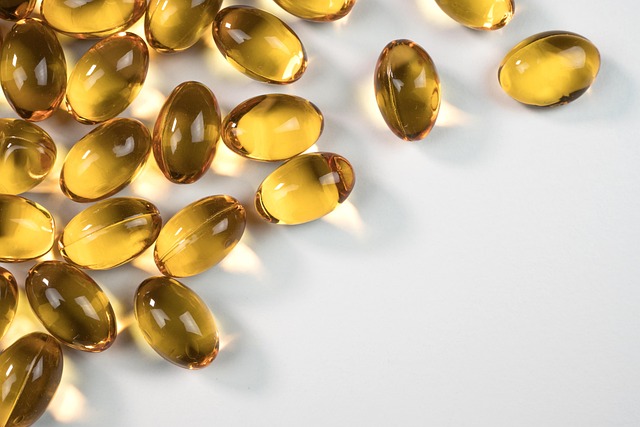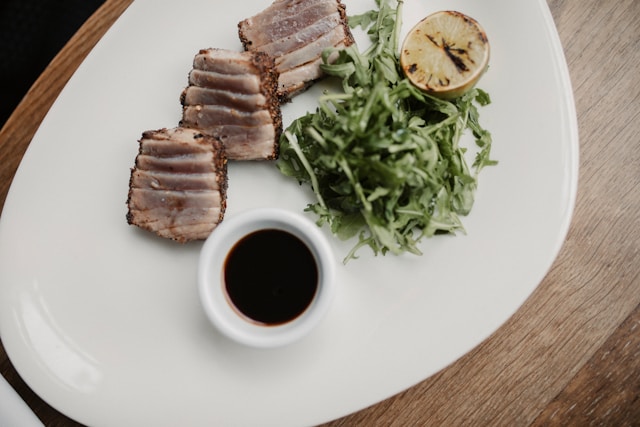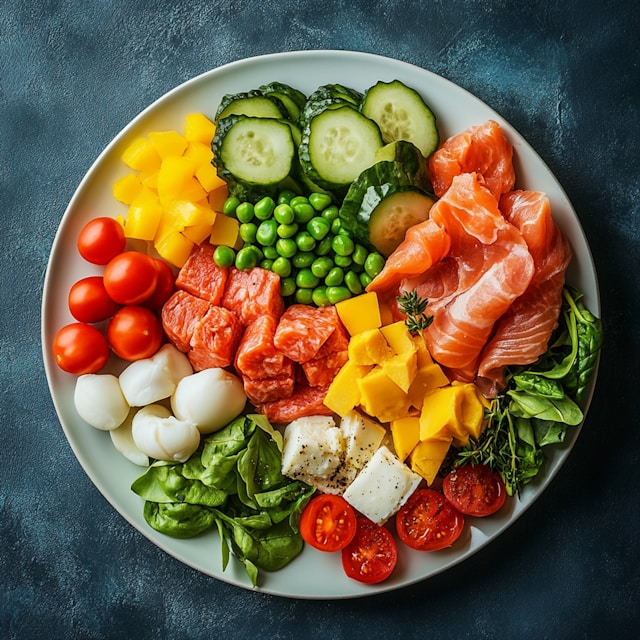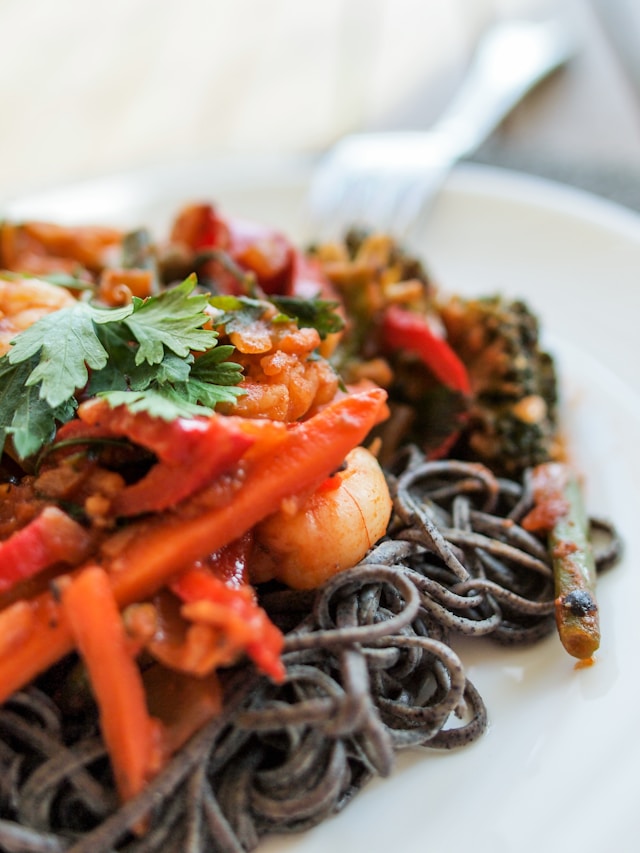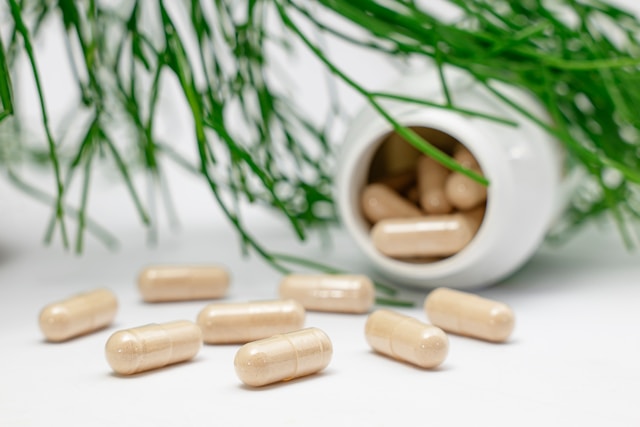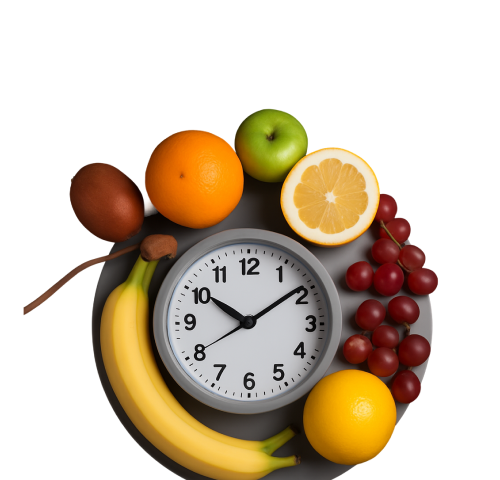Longevity Diet Routine in 2026 — A Clean Eating Framework for Metabolic Health and Long Term Performance
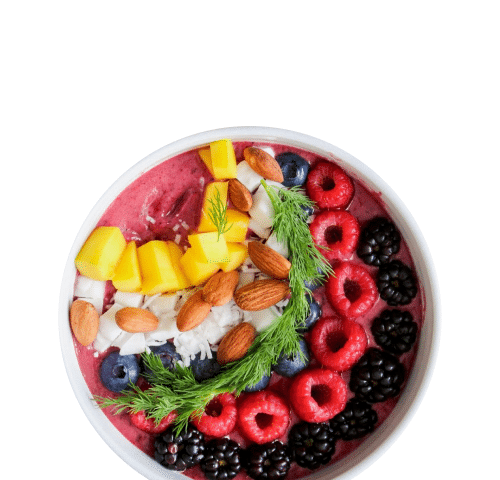
How This Diet Supports Metabolism, Energy, and Longevity
This longevity focused diet routine centers on improving metabolic efficiency, maintaining stable energy levels, and supporting long term health through food quality and timing. Rather than relying on restrictive rules, the approach prioritizes nutrient dense whole foods, balanced macronutrients, and consistent eating patterns that align with the body’s natural rhythms. The routine emphasizes meals built around high quality proteins, healthy fats, and low glycemic carbohydrates. Food choices are selected to minimize inflammation, reduce blood sugar spikes, and support mitochondrial function, which plays a key role in both performance and aging.
This dietary framework is based on widely discussed principles within metabolic health and performance nutrition. It highlights how clean ingredients, thoughtful meal timing, and simplified food choices can work together to support energy production, fat metabolism, and overall wellness. By focusing on sustainable habits rather than short term fixes, this longevity diet routine offers a practical structure for improving daily performance while supporting health over time.
- Last Updated: January 6, 2026
-
-
Early Morning Hydration
Starting your day with proper hydration helps set the foundation for energy, digestion, and cellular health. Beginning the morning with clean, mineral rich water supports metabolic processes and prepares your body for the demands of the day ahead.
This early hydration habit plays an important role in supporting digestion, maintaining electrolyte balance, and establishing a consistent rhythm for your nutrition routine.
- Hydrogen rich water: First thing in the morning, drink water that contains dissolved hydrogen. This approach is commonly used to support inflammation balance and improve how your body absorbs nutrients.
- Pinch of sea salt: Add a small amount of unrefined sea salt to your morning water. This helps replenish trace minerals and electrolytes that may be lost overnight during sleep.
- Filtered or mineral water: Avoid unfiltered tap water when possible. Choose filtered, spring, or mineral water to reduce exposure to impurities and support higher quality hydration.
- Supports digestion and energy: Early hydration helps activate your digestive system and supports steady energy levels, creating a stable foundation for the rest of the day.
- Part of a consistent routine: Make this hydration step part of your daily morning rhythm to keep metabolism, nutrition timing, and overall energy levels aligned.
Rather than being a simple ritual, early morning hydration is a practical way to prepare your body for focus, performance, and long term wellness when paired with thoughtful nutrition habits.
-
Morning Supplements
After hydrating, move directly into a structured morning supplement routine. Each supplement should be chosen with a clear biological purpose in mind, such as supporting energy levels, hormonal balance, and overall metabolic function. This approach is not about taking random pills, but about precision and alignment with your individual needs, ideally informed by bloodwork and nutrient testing. For a broader overview of commonly used options, you can reference the Longevity Supplement List as a starting point.
- DHEA: Take DHEA shortly after waking to support hormonal balance. This supplement acts as a precursor for key hormones in the body and is commonly used to help maintain vitality and balanced hormone levels as you age.
- Omega-3 fish oil: Include a high quality omega-3 supplement, either alongside DHEA or on its own. Omega-3s are widely used to support inflammation balance, cardiovascular health, and brain function, which can be especially relevant when following a low carb or higher fat nutrition plan.
- Multivitamin with methylated B vitamins: Use a comprehensive multivitamin to help avoid nutritional gaps. Methylated B vitamins support efficient absorption and can help maintain mental clarity and steady energy throughout the morning.
- Vitamin D3 plus K2: Combine vitamin D3 with K2 to support bone health, immune function, and proper calcium utilization. This pairing is particularly useful when sunlight exposure is limited, as K2 helps direct calcium toward bones rather than soft tissue.
- Zinc: Take zinc daily to support immune health, hormone regulation, and recovery. Zinc also plays a role in numerous enzymatic processes and helps maintain balanced testosterone levels.
This morning supplement routine fits seamlessly into a broader longevity focused wellness structure, helping support focus, hormonal stability, and consistent energy throughout the day. When paired with proper hydration and nutrition, it reflects a data informed approach to long term health and performance.
(If you want to learn more about building a daily supplement regimen, consider checking out our extensive guide on essential longevity supplements from Andrew Huberman).
-
30/30/30 Diet
Your first meal of the day plays a key role in managing blood sugar, hunger, energy, and hormone balance. Rather than eating randomly, this approach follows the 30/30/30 structure, which combines early protein intake with gentle movement. This strategy helps set a stable foundation for the morning, supporting focus and energy without a mid-morning crash.
- What the 30/30/30 diet means: Consume 30 grams of protein within 30 minutes of waking, followed by 30 minutes of low-intensity activity. The goal is to stabilize blood sugar early in the day and encourage fat metabolism.
- Protein within 30 minutes of waking: Aim to eat breakfast containing around 30 grams of protein shortly after waking, often around 6:30 a.m. This early protein intake helps prevent blood sugar spikes, supports muscle maintenance, and promotes steady energy throughout the morning.
- Low-intensity movement after eating: After breakfast, engage in about 30 minutes of light movement such as walking or stretching. This supports insulin sensitivity, aids digestion, and reinforces the metabolic benefits of the routine.
- Focus on quality ingredients: Choose high-quality protein sources such as pasture-raised eggs. The quality of the ingredients matters, as nutrient density and fat composition play a role in overall metabolic support.
- Avocado for healthy fats: Add half an avocado alongside breakfast to provide monounsaturated fats that support satiety and stable energy. The remaining half can be saved for a later meal.
- Berries for fiber and antioxidants: Include a small handful of organic berries like blueberries or raspberries to add fiber and antioxidants while keeping the overall glycemic load low.
- Optional vegetable-packed omelet: On some mornings, swap standard eggs for an omelet filled with vegetables such as spinach, mushrooms, or peppers. This adds vitamins, minerals, and volume without excessive carbohydrates.
- Superfood smoothie alternative: On days when a lighter breakfast feels better, prepare a smoothie using unsweetened almond milk, spinach, mixed berries, and a scoop of protein powder. This option supports digestion and aligns with an anti-inflammatory eating approach.
- Plant-based protein instead of whey: When using protein powder, choose plant-based options like pea or hemp protein to reduce the risk of dairy-related bloating or inflammation.
- Personalized to your needs: This breakfast structure is flexible and can be adjusted based on lab results, energy levels, and individual goals. Protein amounts, food choices, and macronutrient balance can all be fine-tuned as needed.
The 30/30/30 diet plan works as a deliberate, science-informed way to start the day. By combining early protein intake, light movement, and high-quality foods, it supports stable blood sugar, improved focus, and sustained energy throughout the morning.
-
Mid Morning Coffee
Coffee does not need to be the first thing you reach for in the morning. Allowing your body to wake up naturally before introducing caffeine supports better focus, steadier energy, and improved sleep quality. Being intentional about coffee timing, bean quality, and caffeine limits helps coffee work with your biology rather than against it.
- Caffeine delay after waking: Wait about 60 to 90 minutes after waking before having your first cup of coffee. This allows your natural cortisol rhythm to rise without interference from caffeine, supporting a more balanced energy pattern.
- Coffee follows your morning routine: Drink coffee only after completing hydration, sunlight exposure, supplements, and a protein based breakfast. This sequence helps keep your body’s energy systems aligned throughout the morning.
- Focus on high quality beans: Choose clean, mold free coffee beans to minimize exposure to toxins and reduce unnecessary inflammation. Quality matters just as much here as it does with food choices.
- Often drink it black: Avoid creamers and sweeteners when possible. Drinking coffee black helps keep blood sugar stable and reduces the chance of insulin spikes.
- Health benefits of coffee: Coffee contains natural polyphenols that support metabolism and act as antioxidants. These compounds complement a nutrient dense eating style and may support fat metabolism.
- No caffeine after 2 PM: To protect sleep quality, avoid caffeine within ten hours of bedtime. This usually means limiting intake to one or two cups before early afternoon.
- Stronger effect from timing: Delaying caffeine intake often makes coffee feel more effective. Proper timing can help maintain focus without the need for additional servings.
Mid morning coffee habits show how small timing adjustments can influence energy, sleep, and focus. When caffeine intake is aligned with hydration, nutrition, and daily rhythm, coffee becomes a supportive tool rather than a crutch for long term performance and health.
-
Lunch
By midday, lunch should follow the same structured approach used earlier in the day. Meals are built around clean, nutrient-dense foods that provide steady energy without triggering blood sugar spikes or mid-afternoon fatigue. Protein, fiber, and healthy fats form the foundation of this approach, helping maintain focus and metabolic balance through the afternoon.
- Centered around protein and vegetables: Build lunch around grilled chicken, wild-caught fish, or grass-fed steak paired with vegetables such as arugula, broccoli, or asparagus. This combination supplies amino acids for muscle maintenance along with micronutrients that support sustained vitality.
- Salads built for satiety: Choose large salads made with leafy greens, cucumbers, and tomatoes, dressed with a homemade olive oil vinaigrette. This helps you stay full while providing antioxidants and healthy fats.
- Finishing the morning’s avocado: Eat the remaining half of the avocado saved from breakfast. This adds beneficial fats that support nutrient absorption and improve satiety.
- Low-starch vegetable focus: Prioritize low-starch vegetables like Brussels sprouts, asparagus, and arugula. Keeping starch intake minimal helps maintain consistent blood sugar and energy levels.
- Healthy fats are a must: In addition to avocado, regularly use olive oil and occasionally include a small handful of nuts. These fats support hormone balance and help prevent post-meal energy dips.
- Leafy greens every day: Include spinach and arugula regularly at lunch to supply vitamins, minerals, and fiber while keeping carbohydrate intake low.
- Small portions of clean carbs: While meals remain mostly low in carbohydrates, small servings of organic rice, quinoa, or sweet potato can be added when needed. Refined grains are avoided.
- Low in sugar and processed foods: Avoid sugary sauces, refined oils, and white bread. Keeping meals clean supports consistency and long-term metabolic health.
- Focus on blood sugar stability: Balancing protein, fats, and fiber helps maintain steady energy, mental clarity, and metabolic control throughout the afternoon.
Midday meals built this way emphasize consistency and simplicity. By keeping lunch high in protein, rich in healthy fats, and free from heavily processed foods, you support sustained energy, improved focus, and long-term metabolic health.
-
Afternoon Hydration and Snacks
As the day progresses, the focus shifts to maintaining energy and mental clarity without relying on sugar or heavy stimulants. Afternoon habits center on hydration, clean nutrition, and recovery, especially on more physically active days. This approach supports steady focus and metabolic balance through the second half of the day.
- Stay hydrated with clean water: Continue drinking filtered or mineral water throughout the afternoon to maintain hydration and energy. Consistent water intake helps support focus and cellular performance.
- Add minerals when needed: On days with heavier sweating or more intense training, add a pinch of mineral salt to water or use a high quality electrolyte mix to replenish sodium, magnesium, and potassium.
- Avoid sugary drinks: Skip soda and sweetened teas. Avoiding drinks that cause glucose spikes helps prevent mid afternoon energy crashes.
- Keep snacks nutrient dense: When hunger appears, choose simple whole food snacks such as raw almonds, walnuts, sunflower seeds, or chia seeds. These options provide healthy fats, trace minerals, and steady energy without excess carbohydrates.
- Second coffee or green tea: Occasionally, a second cup of coffee or green tea early in the afternoon can provide a mild lift. Caffeine intake should still stop by 2 p.m. to protect sleep quality.
- Supplements for physical activity: On workout days, sipping essential amino acids or an additional electrolyte drink can support recovery, hydration, and reduced fatigue.
- No snacking needed most days: When breakfast and lunch are rich in protein and healthy fats, snacking later in the day is often unnecessary. Stable energy levels make afternoon cravings less common.
Afternoon habits built around hydration, clean ingredients, and mindful timing help sustain focus, avoid blood sugar swings, and maintain metabolic efficiency well into the evening.
-
Dinner
Dinner should be intentionally simple, nutrient focused, and ideally eaten earlier in the evening, often around 6:30 p.m. This final meal of the day supports overnight recovery, blood sugar stability, and hormone balance while staying consistent with a low carb, high nutrient approach. Rather than eating purely for satisfaction, dinner is designed to help your body repair and recover efficiently through the night.
- Dinner is eaten early: Finish dinner in the early evening to give your body a few hours to digest before sleep. This timing supports better rest and improved metabolic function.
- Centered on protein and vegetables: Build your plate around high quality protein such as grass fed steak, wild caught fish, or lean bison, paired with cooked vegetables like asparagus, Brussels sprouts, or broccoli.
- Prefer red meat in the evening: If red meat has not been eaten earlier in the day, dinner can include grass fed beef such as a ribeye or lean ground beef patty.
- Fish remains a regular option: On alternate nights, choose wild caught salmon or other fatty fish to provide omega 3 fats that support cardiovascular and brain health.
- Keep vegetables consistent: Focus on low starch, nutrient rich vegetables such as roasted Brussels sprouts, garlic sautéed broccoli, or lightly steamed asparagus.
- Be strict about cooking oils: Avoid seed oils and use coconut oil, ghee, or tallow for cooking. For salads or cooler dishes, use extra virgin olive oil or avocado oil.
- Seasonings are simple and whole: Flavor meals with herbs, sea salt, garlic, and natural spices. Bottled sauces and heavily processed seasonings are avoided.
- Healthy fats are always included: Include fats from avocado, olive oil, and grass fed sources to support hormone regulation and maintain fullness overnight.
- Carbs are minimal or skipped: If carbohydrates were already consumed earlier in the day, dinner can be limited to protein and vegetables. Occasionally, a small serving of sweet potato or mashed cauliflower can be added for variety.
- Sample dinner examples: Meals may include a bun less grass fed bison burger served over arugula with olive oil, or herb crusted salmon paired with roasted Brussels sprouts and a small spoonful of mashed sweet potato.
Dinner built this way emphasizes clean simplicity. By balancing protein, healthy fats, and fiber rich vegetables without unnecessary additives, you support overnight recovery, long term metabolic health, and a consistent close to the day.
-
No Late Night Eating or Drinking
Paying attention not only to what you eat, but also to when you stop eating, plays an important role in recovery, hormone balance, and sleep quality. Ending calorie intake several hours before bedtime gives your body time to shift from digestion into repair and overnight restoration.
- Dinner is the final meal: Finish eating at least three hours before bedtime. For example, if bedtime is around 10 p.m., aim to complete dinner by 7 p.m. This gap allows for proper digestion and helps prevent late night blood sugar spikes.
- Improves sleep quality: Maintaining an overnight fasting window allows your body to focus on rest, recovery, and cellular repair rather than ongoing digestion.
- No alcohol near bedtime: If alcohol is consumed at all, keep it with dinner and avoid drinking closer to bedtime. This helps protect deep sleep cycles and supports hormonal balance.
- Kitchen is closed after dinner: Once dinner is finished, avoid returning to the kitchen. Treating dinner as the final meal helps reduce unnecessary snacking and reinforces mindful eating habits.
- Light hydration only: After dinner, limit fluids to small amounts of water or herbal tea. Avoid drinking too close to bedtime to reduce nighttime sleep disruptions.
- Supports overnight hormone balance: Skipping late night food intake helps keep insulin levels low and supports the natural release of growth hormone, both of which contribute to recovery and long term health.
Maintaining a consistent evening cutoff for food and drink helps your body reset overnight. Ending meals earlier supports metabolic health, steadier blood sugar, and better energy the following day, reinforcing a structured and sustainable nutrition routine.
-
Evening Supplements
As the day winds down, the focus shifts toward recovery, relaxation, and cellular repair. Evening supplements are kept targeted and intentional, supporting restful sleep, reduced muscle tension, and long term cellular function. Each supplement serves a clear purpose within a recovery focused nighttime routine.
- Magnesium for relaxation: Take magnesium glycinate or magnesium L threonate in the evening to help calm the nervous system, reduce tension, and support sleep quality.
- Dosage depends on need: Adjust magnesium intake based on daily activity levels and how your body feels. A common range is between 200 and 400 mg taken before bed.
- Muscle support and cramp prevention: Magnesium also supports muscle recovery and can help reduce nighttime cramping, making it especially useful on more active days.
- NMN for cellular energy: To support mitochondrial function and long term cellular health, NMN may be included in the evening routine. NMN supports NAD+ production, which plays a role in energy metabolism and cellular repair.
- Resveratrol for circulation: Resveratrol can be added to support blood flow and vascular flexibility. It is often paired with dinner or other antioxidant focused supplements.
These evening supplements help reinforce recovery and cellular health at the end of the day. When used consistently, they support better sleep quality, balanced energy levels, and long term wellness as part of a structured longevity focused routine.
-
Disclaimer: The products referenced in this article are based on publicly available information and general research. The items linked may not be exact matches to those mentioned and are provided as comparable options. Some links may be affiliate links, which means we may earn a small commission if a purchase is made through them. This content is intended for informational purposes only and should not be considered medical advice.
-

